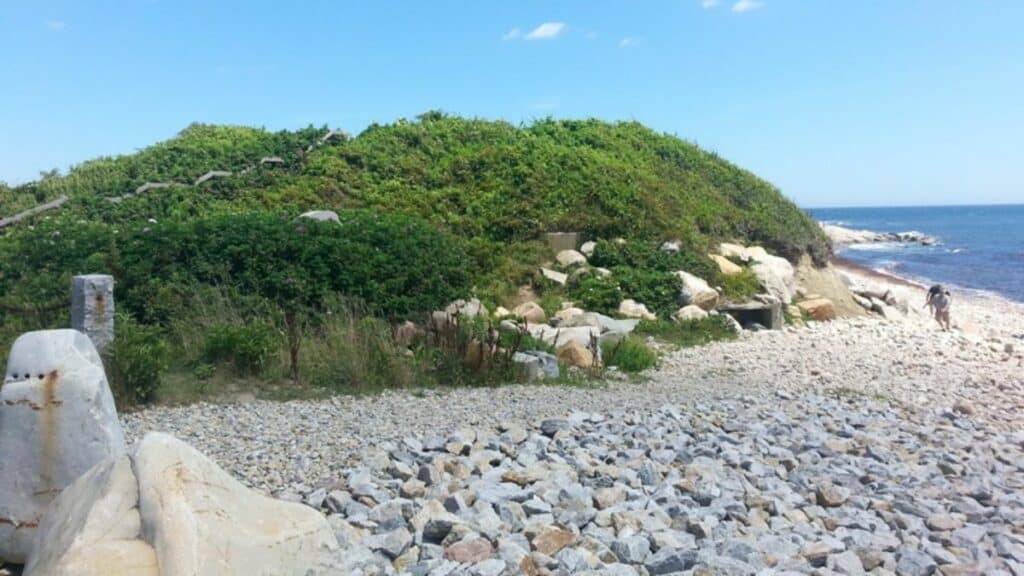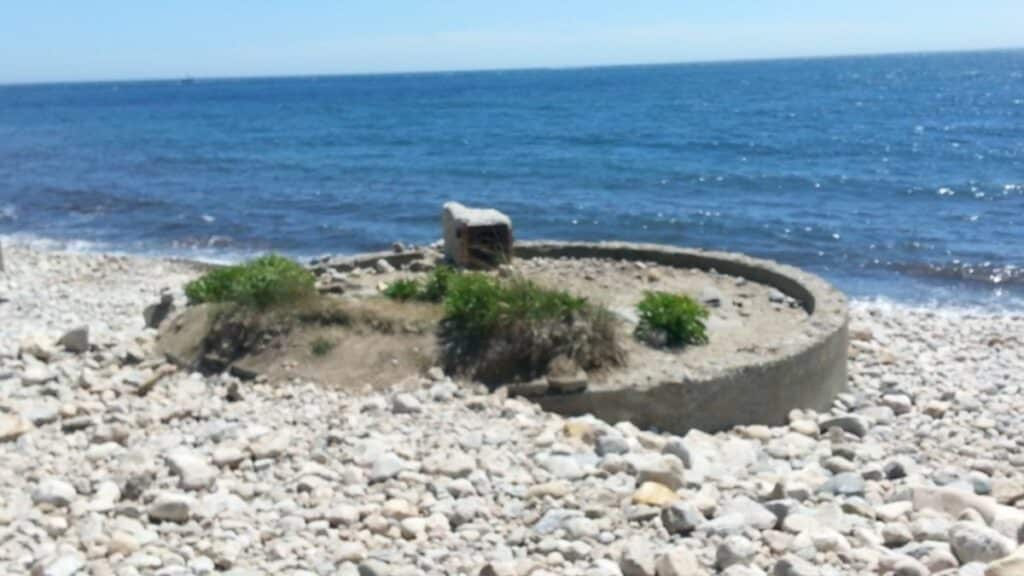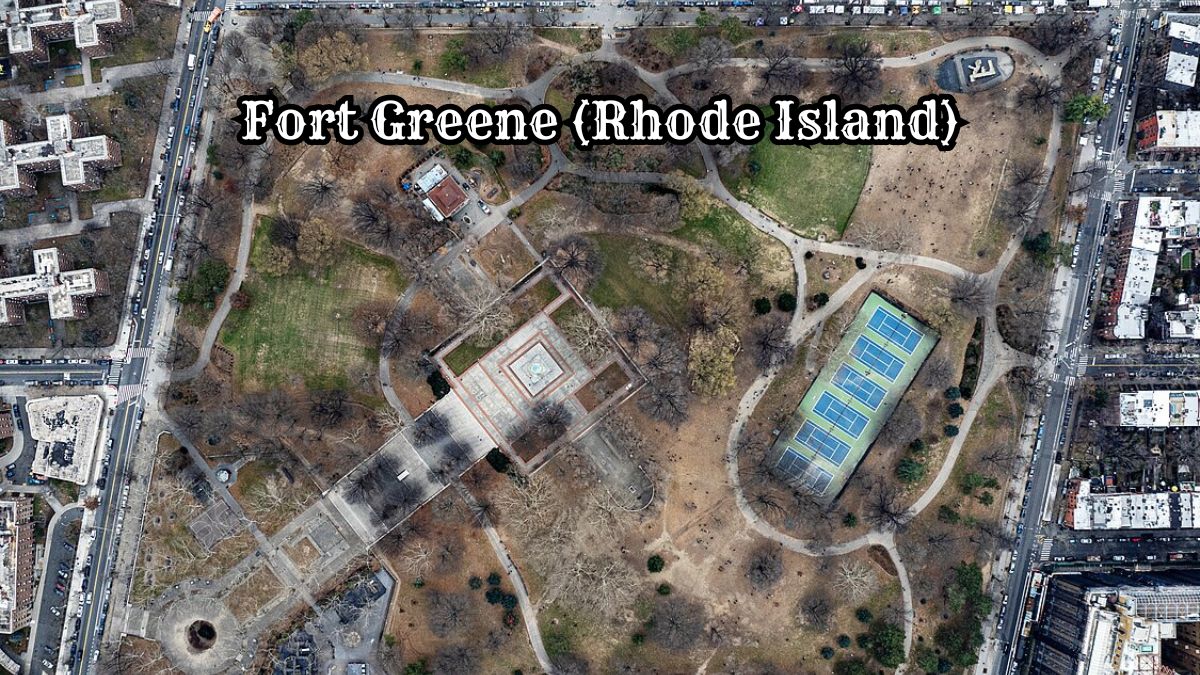Fort Greene is a notable military reservation in Rhode Island, located in the Ocean State. It offers a blend of historical significance and strategic importance.
Fort Greene has played an essential role in military history as a vital part of the United States coastal defense system.
From its establishment during World War II to its current uses, the fort provides a fascinating glimpse into the past and present.
Visitors to Fort Greene can explore various historical structures and gain insight into the fort’s strategic relevance. The reservation, which contributes to the state’s historical narrative, is a must-see for history enthusiasts and tourists alike.
History of Fort Greene (Rhode Island)

Fort Greene, Rhode Island, has played a crucial role in historical military defense and modern community usage.
Its significance spans the Revolutionary War to World War II, impacting coastal defense strategies and local historical awareness.
Revolutionary War to World War II
Fort Greene’s history began during the Revolutionary War when it was named after General Nathanael Greene, a major figure in the American forces.
The fortifications were initially simple, but they evolved. By World War II, Fort Greene was enhanced with coastal defense batteries protecting Rhode Island’s shores. These defenses were crucial for monitoring and deterring enemy ships.
Fort Greene housed United States Army Reserve units throughout both wars, maintaining a state of readiness.
The presence of these facilities underscores its strategic importance over the centuries. Military activities here have left a durable mark, making Fort Greene an essential location for understanding American coastal defense history.
Modern Utilization
Today, Fort Greene serves as a historical site and a community space. The remnants of its military past, including bunkers and batteries, are preserved and can be visited, offering insight into its historical significance.
Locally, the area has become an educational resource, frequently visited by schools and history enthusiasts. Public access to these historical structures has increased local engagement with history.
Efforts have been made to preserve the site, integrating it into the community while retaining its historical integrity.
The balance between conservation and modern utilization ensures that Fort Greene remains a vital, historical, and functional space today.
Geography and Location

Fort Greene, Rhode Island, is strategically positioned along the coastline. Its proximity to Narragansett Bay and Long Island Sound offers significant naval and commercial value.
The surrounding areas and land configurations influence its accessibility and regional interactions.
Narragansett Bay’s Strategic Importance
Narragansett Bay serves as a critical natural harbor for Fort Greene. The bay’s extensive waters provide a safe anchorage and are ideal for naval operations.
The bay lies adjacent to Narragansett and Point Judith, two key points that enhance its strategic military importance.
Historically, the bay’s depth and sheltered waters have made it essential for trade and defense.
It links directly to the Atlantic Ocean, making it a pivotal point for maritime routes. Commercial ships frequently use this waterway to access local and international markets efficiently.
Adjacent Regions
Several significant areas border Fort Greene. To the west lies Point Judith, a prominent site for marine navigation. Its lighthouse is crucial for guiding vessels into Narragansett Bay.
Northward, the region connects with Narragansett, known for its scenic beaches and tourism.
To the east, the waters of Long Island Sound play a vital role in transportation and ecological diversity. This sound forms a natural boundary and provides a corridor for maritime traffic between Rhode Island and nearby states.
The diverse landscape around Fort Greene ensures it remains an active and influential region.
Explore More: 10 Historic Forts in Rhode Island
Military and Coastal Defense
Fort Greene played a significant role in military and coastal defense. It served as a fortified location contributing to the Harbor Defenses of Narragansett Bay and included unique elements of Seacoast Defense Architecture.
Harbor Defenses of Narragansett Bay
The Harbor Defenses of Narragansett Bay were designed to protect Newport, Rhode Island, and its naval installations. The United States Army Coast Artillery Corps managed these defenses, which included Fort Greene.
Key components were strategically placed artillery batteries, observation posts, and minefields.
Several batteries housed various calibers of coastal artillery. This network was critical during both World War I and World War II.
Radar stations and searchlights were implemented to track and engage enemy vessels, enhancing defensive capabilities.
Fort Greene’s defenses also included underwater minefields. These mines could be remotely detonated to thwart enemy ships, making the bay difficult for hostile forces to navigate.
Coordination between different installations ensured comprehensive protection.
Seacoast Defense Architecture
Fort Greene’s Seacoast Defense Architecture featured many elements characteristic of early 20th-century military forts. Thick concrete structures were designed to withstand naval bombardment.
The placement of coastal artillery was meticulously planned to cover key maritime approaches.
Observation towers provided wide surveillance ranges. These towers elevated observers, allowing them to spot enemy vessels far from sea.
Camouflage and concealment techniques were employed to minimize visibility from enemy ships and aircraft.
Barracks, command posts, and supply buildings were strategically located within the fort. Their interconnection facilitated efficient communication and supply chains.
The architectural design reflected the technological advancements in fortification during that period, ensuring Fort Greene remained a formidable defensive position.
The Fortifications of Fort Greene
Fort Greene’s fortifications include complex battery construction and gun emplacements for effective coastal defense. Essential elements such as concrete bunkers and specialized carriages enhance its durability and operational readiness.
Battery Construction and Armament
The construction of Fort Greene’s batteries involved the robust use of concrete.
Concrete structures provided resilience and strength against enemy bombardment. Many batteries housed 6-inch guns mounted on high-angle shielded barbette carriages.
This combination allowed for both long-range and high-angle fire, enhancing defensive capabilities. Ammunition storage was thoughtfully integrated into bunkers, keeping it protected from both the elements and potential attacks.
Gun Emplacements and Fire Control
Gun emplacements at Fort Greene featured precision-engineered setups for optimal firing accuracy. Panama mounts, known for their circular concrete pads, stabilized large artillery pieces.
Fire control systems included observation posts and plotting rooms designed to calculate and coordinate fire directions efficiently.
These emplacements ensured that guns could be directed swiftly and accurately at incoming threats, forming a crucial part of the seacoast defense in the United States.
Park and Memorials
Fort Greene in Rhode Island offers scenic beauty and historical landmarks, making it a popular destination for visitors. The area is known for its well-maintained parks and memorable sites honoring local history.
Fishermen’s Memorial State Park
Fishermen’s Memorial State Park is a serene and picturesque reserve located near the coast. The park features sprawling green fields, picnic areas, and well-marked walking trails.
Camping facilities within the park include several options, such as tent sites and RV spots, suitable for families and individuals.
Close to the sea, the park gives visitors convenient access to the coastal environment. It also has a playground, making it family-friendly.
Seasonal events, such as fishing tournaments and nature programs, draw a crowd and provide educational opportunities about local wildlife.
Public Accessibility and Recreation
Public accessibility to the park is excellent, with ample parking spaces and paved pathways for ease of movement. Accessible restrooms and informative signage enhance the visitor experience.
Fishing areas are designated for seasoned anglers and beginners, ensuring an inclusive atmosphere.
Recreation in the park includes options for biking, bird-watching, and barbecuing.
The Point Judith Fishermen’s Memorial within the park serves as a poignant reminder of the local community’s connection to the sea, honoring those who have lost their lives.
Visitors can enjoy relaxation and activity, making the park a versatile destination for various interests and age groups.
Supporting Structures and Facilities
Fort Greene in Rhode Island hosts key military operations and training facilities. These structures offer comprehensive support to the personnel stationed there.
Camp Varnum National Guard Facility
Camp Varnum is a crucial part of the East Reservation, serving as a Rhode Island National Guard training site. It includes firing ranges, obstacle courses, and various simulation environments.
The camp prioritizes efficient training with a range of classrooms and training centers. Staff and trainees benefit from modern accommodations and dining facilities.
The logistical support includes vehicle maintenance facilities and storage for equipment and supplies.
Fort Greene Army Reserve Center
Located on the West Reservation, Fort Greene Army Reserve Center supports reserve units with administrative and operational needs. The center includes office spaces, conference rooms, and a drill hall.
The South Reservation hosts the main operational buildings, including supply depots and maintenance shops. Personnel have access to fitness centers, recreational areas, and medical facilities.
This ensures a comprehensive support system for all reserve soldiers.
Local Impact and Legacy
Fort Greene in Rhode Island has significantly influenced the surrounding regions, particularly in development and cultural heritage. The historical presence of various communities has left a lasting impact that is still visible today.
Influence on Regional Development
Fort Greene has played a crucial role in shaping the development of Narragansett and nearby regions, including Little Compton and Newport.
Its strategic location near Sakonnet Point facilitated trade and movement, linking coastal towns and fostering economic growth.
Local fishermen benefitted from the fort’s proximity to key fishing areas, enhancing their livelihoods.
The fort’s presence also spurred infrastructure development, leading to improved transportation networks and boosting regional commerce. Due to these developments, the entire area saw noticeable growth.
Cultural and Historical Recognition
Fort Greene’s cultural heritage extends beyond its military significance, encompassing the traditions and lifestyles of the local communities.
Narragansett and Little Compton have preserved many historical elements that highlight the region’s past.
Museums and historical societies in Newport celebrate the fort’s legacy through exhibits and educational programs.
The local fishing community honors traditional practices, reflecting Fort Greene’s lasting impact on their cultural identity. This recognition ensures that the history and culture remain integral to the community’s identity.
References and Resources
These key references and resources provide valuable insights and detailed information regarding Fort Greene.
Historical Documents and Accounts
FortWiki provides detailed data on military installations, including historical facts and architectural details about Fort Greene.
The Lewis Emanuel Raymond collection includes personal narratives and letters from soldiers stationed at the fort. Arthur P. Wade’s research papers comprehensively analyze the fort’s structural and operational history.
The Diary of Frederick Mackenzie, a British officer, documents daily life at Fort Greene during pivotal moments.
Historical References often highlight notable events and changes in military strategy impacting Fort Greene, providing context for its historical significance.
Educational and Research Material
Local libraries and universities house extensive academic papers and theses exploring various facets of Fort Greene.
FortWiki is also a primary source of technical data. It includes maps, blueprints, and architectural studies.
Historians like Arthur P. Wade provide in-depth analysis. Meanwhile, Lewis Emanuel Raymond’s accounts offer a human perspective.
These resources are invaluable for researchers, students, and history enthusiasts seeking detailed knowledge about Fort Greene.

Cory is a website owner and content creator who enjoys fishing, history, coin collecting, and sports, among other hobbies. He is a husband and father of four.
Romans 15:4 For whatever was written in former days was written for our instruction, that through endurance and through the encouragement of the Scriptures we might have hope.

